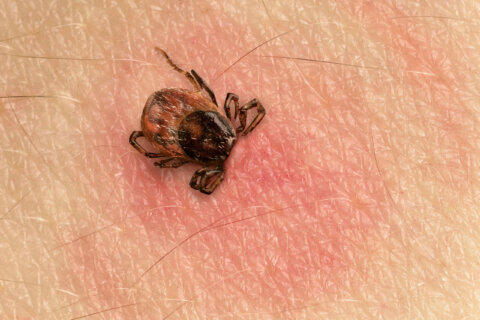As the school year begins and young athletes get back into action, a D.C. sports medicine doctor explains what parents should be doing to keep their kids safe from heatstroke.

“It’s important that parents advocate with their school districts and make sure that the coaches and the schools are well prepared with emergency action plans for heat illness and heatstroke,” said Dr. Korin Hudson, an attending physician with MedStar Health, an associate professor at Georgetown University and team physician for the Washington Mystics and the Wizards.
Safety measures might include making sure cooling tubs are available on very hot days and that appropriate protocols are triggered during extreme weather. The death of University of Maryland football player Jordan McNair was a recent example where protocols weren’t followed.
“In sports medicine, we go by something that’s a little more complex — what we call the Wet Bulb Globe Temperature (WBGT),” she said.
WBGT is a measure of heat stress in direct sunlight, based on temperature, humidity, wind speed, sun angle and cloud cover (solar radiation), according to the National Weather Service.
“That’s going to be different for every playing surface, every playing field,” Hudson noted. “So that may be different at my school, on the turf field where the football team is practicing … from where the cross country team is training out in the shady woods.”
Hudson said the WBGT should be measured at different times of the day on different practice surfaces, and that guidelines should specify when to shorten, cancel or modify practice to give extra breaks and extra water time.
“And those guidelines should be followed,” Hudson emphasized.
Hudson advised athletes to dress appropriately for the environment, wearing light colors and loose-fitting, breathable clothing that evaporates sweat. Families buying clothes for athletes should consider technical fabrics that wick sweat away to help the body keep itself cool.
Athletes should hydrate before, during and after activity and get plenty of sleep. Hudson said a well-rested, well-nourished athlete is better prepared for practice and will be less susceptible to injury and heat illness.
Also, athletes should only participate if they’re healthy. Hudson said there’s been a late-summer surge in hand, foot and mouth disease, and added that that and other viral ailments such as COVID-19, colds and flu can increase the risk for heat-related illness.
“That increase in body temperature will put them at risk for heat illness and heatstroke,” Hudson said.
If there’s still time to prepare before outdoor sports schedules resume, Hudson said, kids need to resume outdoor routines slowly and carefully and cautiously — like a dial, she said, not like a switch.
“We can’t assume that our kids are going to go from being indoors at science camp, or indoors watching movies all summer, [to] the first day of soccer practice or the first day of football practice … and be fine.”








